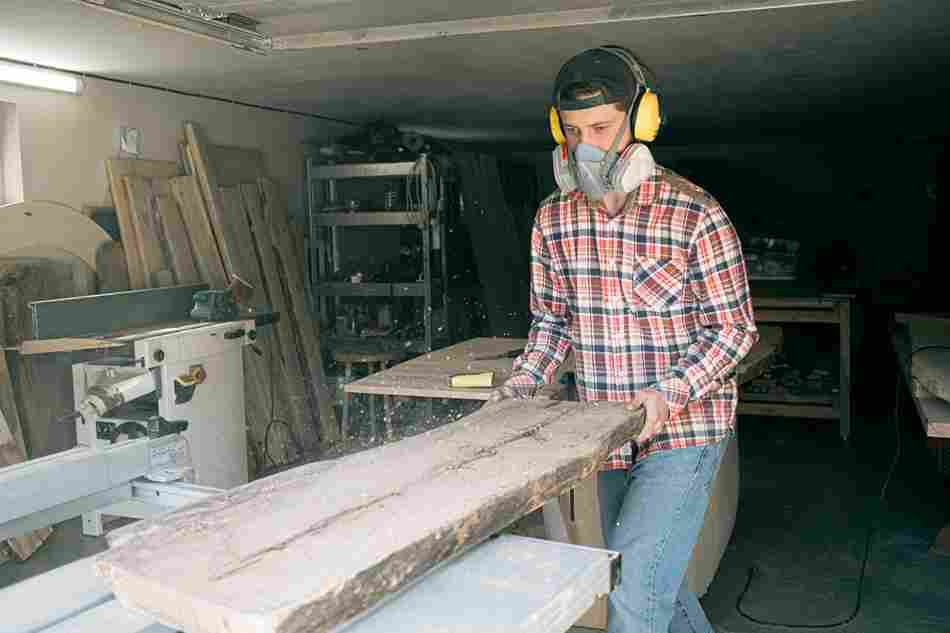SAFETY PRACTICES [2×2=4, 1×5=5]
Importance of Safety
Worker injuries or diseases can result in:
The loss of life
Pain & Suffering,
Loss of income and financial well-being
Relationship-related stress
Loss of Job or Career
Health-care costs that exceed the limits of insurance coverage.
For a tiny firm, one injury might spell financial ruin. Costs for a business include:
Production Losses
Wages for work not done
Increased workers’ compensation insurance costs
Damage to equipment or machinery
Hire and/or train new personnel.
Reduced product quality and staff morale
Decline in worker morale
High turnover and missed work hours
Types of Safety
Personal Safety
Rule #1: Always keep the doors locked.
Rule #2: Always keep the doors closed.
Rule 3: Keep medicines in safe cabinets.
Rule #4: Keep the floor dry at all times.
Rule 5: Always maintain an emergency plan.
Rule 6: Ensure that alarm systems are working.
Rule 7: Turn on the security lights at night.
Rule 8: Keep certain rooms locked, such as the laundry room.
Rule 9: Never Give Personal Information to People on the Internet.
Machine’s Safety
Only use machinery if the protections have been correctly placed and set.
Never attempt to remove or circumvent machine safeguards.
Do not use a machine with unauthorized or damaged safety features.
Report any machine safety issues as soon as possible.
Lubricate machine parts where possible without removing the protection.
Remove machine protections only after the equipment has been locked out/tagged out.
Avoid generating safety dangers, like as additional pinch points, or allowing things to fall into a machine’s moving parts.
Always use suitable protective clothing (PPE) and avoid dangling jewelry, loose clothing, or long hair near machinery.
Never walk away from a machine until all of its components have stopped moving.
Always consult your supervisor if you have any questions or concerns about machine safety or using safeguards.
Tools Safety
Hand Tools are tools that can be operated manually without the need for electricity or other energy. Hand tools include hammers, chisels, screwdrivers, shovels, and pickaxes.
Hand Tool Hazards
Eye damage from flying particles
Hammer can cause impact injuries.
Hand tool handles were damaged.
Slipping during use.
Falling from a height.
While ascending a ladder with tools in hand.
Safety precautions for hand tools:
Before using, inspect it thoroughly.
Always maintain cleanliness.
Always store tools in a box.
Use the correct tool for the job.
Use a bucket and a leather bag to move the tools at a height.
Follow color coding and raise awareness among workers about safe use.
1.1.4. Workplace Safety
Safety should never be an afterthought, especially in the workplace, where organizational productivity is directly related to employee well-being. As a result, if you want to increase workplace productivity, you must incorporate workplace safety into your organization’s culture.
This post will teach you about workplace safety, common workplace risks and accidents, workplace safety tactics, and accident prevention techniques.
What is Workplace Safety?
Workplace safety is the prevention of components that can lead to danger, accidents, and other negative impacts in the workplace. It represents the result of policies, attitudes, and procedures aimed at reducing workplace hazards, accidents, and injuries.
Workplace safety frequently has a direct impact on your workforce’s productivity and well-being, which in turn affects the quality of your company’s output. Employers must aim to create a safe atmosphere with an appropriate level of risk for all employees.
Employees must also be alert to working scenarios and settings that could threaten their safety or expose them to unacceptable risk levels. In the USA, the Occupational Safety and Health Administration (OSHA) acts. as the regulatory body for workplace safety.
Types of Workplace Hazards and How to Prevent Them
Electrical Accident
Electrical mishaps are extremely common in the workplace, and they are caused by unprotected access to high voltage electrical outlets. The Electrical Safety Foundation International reports that electrical risks lead to about 300 deaths and 4,000 injuries in American workplaces annually.
Electrical burns, flames, and shocks are the three main types of electrical accidents. Electrical shocks occur when your body comes into touch with electricity, causing the current to flow through your body and, in severe situations, leading to cardiac or respiratory failure.
Electrical burns are often the result of electrical shocks and can be either internal or exterior. Electrical fires start when uninsulated wiring or faulty circuits come into contact with flammable materials in the workplace, such as cotton or wood shavings.
When workers must utilize faulty extension cords or work in locations strewn with exposed power lines, they are immediately at risk of electrical incidents. In many circumstances, such exposure can cause minor to serious damage, particularly burns, heart arrest, and even death (electrocution).
Other scenarios that can cause electrical accidents include the following:
The workplace contains hidden electrical outlets.
Hazardous equipment or installation.
Lack of personal protective equipment.
Poor control over job activities
Uninsulated electrical wiring
Lack of training.
Failure to separate circuits before functioning, NEA.
Here are some things to do if an electrical accident, particularly a shock or burn, occurs in the workplace.
Do not touch the victim with your hands.
Do not remove any blisters or burnt flesh from the victim’s body.
Do not rub any ointment on the burns.
Workplace Safety Tips to Prevent Electrical Hazards
To protect your employees and prevent electrical shock accidents in the workplace, employers and employees must take extra care to practice workplace safety habits. Specifically, here are a few precautions you can take:
Always inspect the working area for uninsulated wires, broken cord, and exposed electrical circuits beforehand.
Do not make use of faulty electrical equipment at all times.
Workers must wear personal protective equipment.
Isolate electrical equipment before working on them.
2. Exposure to Dangerous Chemicals
Toxic chemicals in the workplace can potentially jeopardize employee safety, particularly when exposed to these substances without proper precautions. Chemical exposure can cause cancer, organ failure, and death.
Employees may be exposed to a variety of harmful compounds while carrying out their everyday responsibilities at work.
Employees may be exposed to these compounds via inhalation, direct or indirect skin contact, ingestion, or injection. Chemical exposures, unlike other industrial mishaps, usually have slow and long-term effects, with far-reaching consequences.
Workplace Safety Tips to Avoid Exposure to Dangerous Chemicals
When working with chemicals in the workplace, always use personal protection equipment. NEA
To reduce individual employees’ exposure to toxins, create a work roaster.
3. Machinery & Tools Hazard
Employees who work in industries that demand the use of machinery and tools, such as construction or transportation, are at risk of these accidents.According to an Occupational Safety and Health Administration data, 12 of the 874 construction-related deaths in 2014 were caused by machinery and tool accidents.
In many cases, these events are caused by the use of faulty equipment, a lack of fundamental understanding, product flaws, or a failure to follow safety procedures. Common industrial machinery and tool disasters include a burn caused by a malfunctioning heater in a manufacturing.
Falls from a faulty ladder or unstable scaffolding.
Cuts caused by damaged or sharp tool edges.
Injuries caused by the use of the incorrect tool.
Hearing loss caused by not wearing earmuffs when working in a manufacturing.
Lacerations or amputations caused by the use of equipment without proper safety devices.
Crush injuries from machine entanglement.
Workers who are injured in machinery or tool accidents are entitled to compensation for medical bills and other related expenditures. If the accident was caused by a defective product, the employee may be able to file a product liability claim against the equipment maker.
Workplace Safety Tips: Preventing Machine and Tool Accidents
Organizations must do regular risk assessments.
Tools and machinery should be maintained on a regular basis and replaced as necessary.
Use the Formplus incident report form to quickly file reports on any machinery or tools to avoid accidents.
Workers must use appropriate protective equipment.
Employees must be trained on how to utilize machines and tools.
Safety guards must be installed on workplace equipment.
4. Workplace Harassment
Workplace harassment is a prevalent problem that can lead to an uncomfortable work atmosphere, decreased productivity, and harmful behaviors. It includes any behaviors that frequently threaten, abuse, ridicule, or discriminate against an employee(s), which can have a negative impact on work performance.
Many times, such negative acts are directed at specific demographics; hence, employees may face abuse and discrimination because of their socioeconomic status, gender, race, or physical appearance.Workplace harassment, often called workplace aggressiveness, can take several forms such as bullying, psychological abuse, or sexual assault.
5. Fire Accidents
A fire mishap is a major risk that can result in the loss of life and property in the workplace. The US Bureau of Statistics reports that workplace fires and explosions cause approximately 200 deaths and over 5,000 injuries annually.
The first step to preventing a fire outbreak in any organization is recognizing potential causes. Here is a list of some of the things to look out for.
Faulty electrical equipment is a leading cause of workplace fire accidents. An electrical fire can be quick, widespread in minutes, difficult to control, and extremely damaging.
Cluttered work spaces can lead to fires. Fire hazards are common in workstations that are cluttered with flammable materials and improperly ventilated.
Using flammable materials in production requires extra safety precautions. Failure to do so raises the chance of a fire outbreak.
Negligence: When personnel fail to follow safety rules, it can lead to fire incidents.
How to Prevent Workplace Fire Accidents
Make several fire exits in the workplace. Fire exits should be appropriate for the size and structure of your building.
Install fire alarms and extinguisher systems.
Inflammable items should not be placed near ignition sources such as circuits or electrical outlets.
Conduct mandatory fire exercises on a regular basis.
Use the Formplus incident report form to promptly notify your workplace of any fire hazards.
Don’t overload power circuits.
6. Workplace Theft
Workplace theft happens when an employee fraudulently acquires cash or non-monetary assets from his or her employer. Employees who commit workplace theft frequently perceive it as a way to settle scores with their bosses or to retaliate against them for low pay or other bad working conditions.
How To Prevent Workplace Theft
Develop and implement workplace anti-theft measures.
Plan anti-theft workshops for employees.
Limit the quantity of cash available in the workplace.
Always verify receipts and invoices before making payments.
7. Workers Existing Health Conditions
Workers who have underlying health issues are more vulnerable to workplace accidents, such as those caused by chemical exposure. Employers must take care to accurately document their employees’ medical histories and conduct medical examinations prior
How to protect employees with underlying illnesses in the workplace
Implement flexible working hours for employees with pre-existing health concerns. NEA
Limit the employees’ exposure to job dangers such as hazardous chemicals.
Observe additional safety precautions in the workplace.
How to Manage Workplace Accidents
Proper Orientation/Training
Employees must be properly informed about workplace safety measures and instructed on how to keep the workplace safe at all times. As an employer, make it standard practice to provide mandatory safety workshops and training on various areas of workplace safety for all stakeholders in your firm.
Employee safety training should focus on familiarising them with various workplace dangers and how to recognize, report, and prevent them. Employees should receive sufficient training before using any equipment in the workplace, and they should also follow other safety practices to help prevent mishaps.
Have a Safety Policy Every Employee Must Follow
In accordance with OSHA requirements, your firm must develop and implement a mandatory workplace safety policy for all employees. All employees must get acquainted with these safety principles and follow them at all times.
In your workplace safety policy, include methods for dealing with emergency events like fires and workplace violence. Your organization’s safety policy should be reviewed on a regular basis, and each employee should have a copy of it for future reference.
Conclusion
Employees have the right to be safe while doing a variety of jobs in any firm. As a result, every company must emphasize workplace safety and employee protection in order to promote the well-being of all employees and others inside the firm.
Everyone is responsible for ensuring workplace safety because a breach can have serious implications. As a result, personnel must receive sufficient training in workplace safety measures and advice, and safety monitoring systems must be established and monitored as needed.







